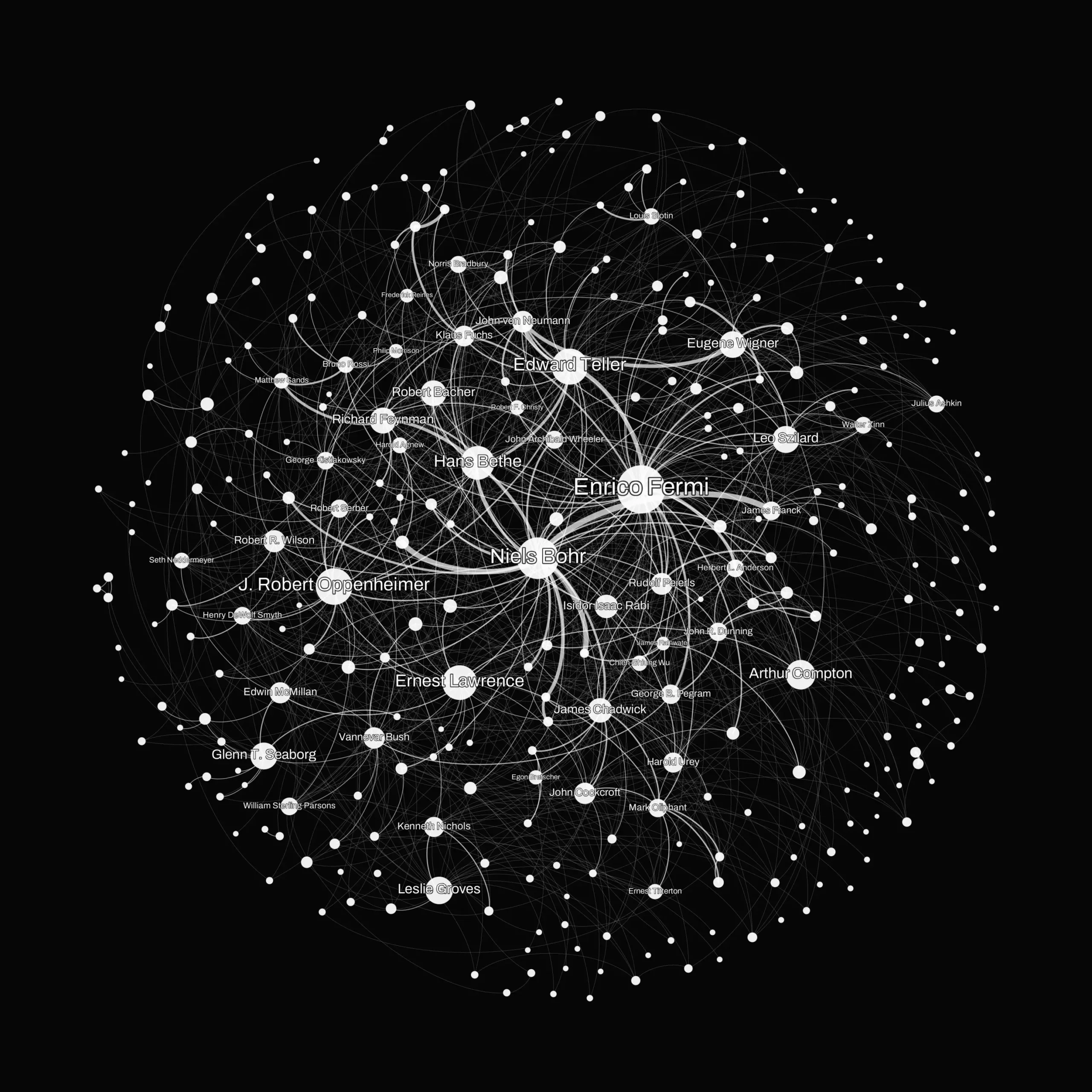The Manhattan Project, known as a top-secret program during World War 2, resulted in the development of the first atomic bombs. This covert research endeavor involved numerous gifted and reputable scientists, including physicist J. Robert Oppenheimer. Recently, Milán Janosov, Founder of Geospatial Data Consulting and Chief Data Scientist at Baoba, embarked on a mission to map the relationships between these scientists using network science, a field that explores the intricate connections between individuals or groups. By utilizing language processing techniques to analyze Wikipedia pages, Janosov was able to construct a visual representation of the collaboration and social connections that underpinned the Manhattan Project.
Janosov, with a background in physics and experience in mapping scientists’ networks, was inspired to explore the Manhattan Project after watching the popular movie Oppenheimer, released in July of this year. Drawing from his knowledge in network science, he sought to shed light on the extensive research efforts behind the development of the atomic bomb. While the traditional method of building networks relies on shared publications, the classified nature of some of the Manhattan Project’s research presented a challenge. To overcome this obstacle, Janosov turned to Wikipedia, the most accessible and public information platform available.
To map the relationships between scientists involved in the Manhattan Project, Janosov collected the Wikipedia pages of every Nobel laureate and compiled them into a dataset. He then employed language processing techniques to analyze the texts within these pages. By quantifying the frequency of mentions and references on each laureate’s page, he was able to construct a network where each scientist represented a node connected to others based on these Wikipedia connections. For example, the page of Oppenheimer mentioned Enrico Fermi multiple times, forming a strong link between the two physicists.
The map created by Janosov reveals the most renowned scientists of the Manhattan Project as dots, with lines representing the connections between them. This intricate web of relationships highlights the research circles that closely collaborated during that time. Janosov notes that the network’s community structure outlines different departments and historically significant groups, such as the Theoretical Division with Feynman and World War II refugees around Bohr. However, one interesting aspect is the strong connectedness among Hungarian immigrants, often referred to as the “Martians” – Teller, Wigner, Szilard, and Neuman. These individuals played a foundational role in the dawn of the atomic age, and their strong connections are clearly visible in the network map.
Unlocking the Power of Network Science
The colorful map of the Manhattan Project created by Janosov demonstrates the value of network science in visualizing complex systems with many interacting components. It serves as a recent example of how network science can facilitate the representation of human connections. As this field of research continues to evolve, future studies may shed new light on a wide array of topics, spanning both science and the humanities. Janosov himself has shifted his focus to questions related to urban planning, geospatial data science, and sustainability, showcasing the versatility of network science in various domains.
Milán Janosov’s exploration of the connections between scientists involved in the Manhattan Project through network science provides a fresh perspective on this groundbreaking research endeavor. By utilizing Wikipedia and language processing techniques, he was able to map out the relationships and collaborations that played a pivotal role in the development of the atomic bomb. This remarkable visualization demonstrates the power of network science in uncovering hidden connections and offers a glimpse into the extensive scientific collaboration that shaped human history.


Leave a Reply